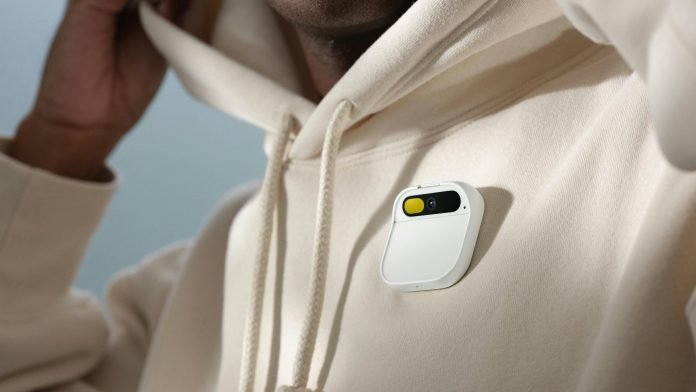Tech is convinced artificial intelligence (AI) is the next big thing for consumers, so much so that AI gadgets are now all the rage. From established companies like Samsung and Google to startups like Rabbit and Humane, 2024 has seen a plethora of AI gadgets launched. Each with its own unique form factor and design, but ultimately they all have the same goal – help us do more without having to take our phones out of our pockets.
While this goal is indeed lofty, it is clear that it is not something we should expect from today’s AI gadgets. Marquees Brownlee’s (MKBHD) recent reviews of the Humane AI pin and Rabbit R1 clearly showed as much. The tech simply isn’t there yet, a fact he clearly pointed out, much to the fury of these companies, and their fans. Ken Kocienda, the Head of Product Engineering at Humane took to Twitter/X with a lengthy reply to the negative reviews, saying, “Making new things is hard… I feel that today’s social media landscape encourages hot takes… and the spicier the better! Indeed, it’s so easy to find people online who are willing to jump on the skepticism bandwagon to gape at the same things you’re pointing at and poke holes in every little detail.”

While Kocienda’s post was a lot of things, an apology was not among them. Rather than admit that Humane’s AI pin was not ready for prime time, he defended the company’s decision to launch as “People will get it with a little time and effort. This model will win.” While that certainly be the case in five or 10 years, the question is – what about today? Humane launched in 2024 promising to revolutionise the way we live and work today. MKBHD made a very vital point when he said in his review “a lot of tech companies are delivery tech kinda backwards. They’re delivering such unfinished products that it actually makes them nearly impossible to review.” That right here, is the crux of the issue. Not the build quality, or the feature set, or even the (lack of) compatibility with your other tech. The fact is the tech simply isn’t usable today, an issue plaguing the entire tech world across product categories.
There are a host of other firms launching half-baked products that promise the moon, only to deliver the bare minimum. Take Tesla’s autopilot feature. The system was reportedly responsible for at least 13 fatal crashes in the USA according to the National Highway Traffic Safety Administration (NHTSA), which seems like a very small amount compared to the thousands of crashes caused by human error. However, in December 2023, the company still recalled over two million vehicles due to faulty autopilot software. Recall aside, the mountain of social media footage shows us that the current state of Autopilot is far from CEO Elon Musk’s blatantly false messaging and vision. Musk wants us to think of Tesla as a driverless car, but clearly, the software isn’t capable of that yet. Then, of course, there are the faulty AI generators and chatbots launched by Google, OpenAI, Microsoft, and others. From racist and sexist messages to encouraging self-harm and sharing false information, these services have often caught the public’s attention for lacking any safeguards while they are heralded as the future of work.

For decades now, Silicon Valley’s mantra has been “move fast and break things”. That largely worked for computer software, phones, and other gadgets because there was always a known concern that tech wasn’t perfect. We knew this because the tech was largely physical and the problems tangible, like a slow processor or low-quality display. However, with the shift to software and platform-based solutions, that isn’t always the case. The iPhone may be one of the best pieces of hardware out there, but as many frustrated consumers know, Siri is far from a functional assistant. Yet, there is little to no hint of this until we use Siri, after purchasing the iPhone. At that point, you are simply reliant on Apple’s software updates and future promises of Siri getting better. The same is the case with Tesla, Rabbit R1, or the Humane AI pin. The hardware of these AI gadgets is generally fantastic, but that is not why we buy these products or even what they are for. The software is what truly determines the functionality of the hardware, and more often than not this is where these companies fall flat. Buying a product on the promise of future updates is not what most consumers do. That is for investors and early adopters. There’s a key difference between the two that most of these tech companies don’t seem to understand.
Consumers need stable, reliable products that can help them navigate daily life without too much hassle. Of course, tech is bound to fail. No one can or should expect these companies to work 100% of the time. That said, a failure rate of 50-60% does more harm than good. If failure becomes the norm, the service will simply cease to exist in the public consciousness. People will automatically migrate towards solutions that work, even if they aren’t as futuristic or innovative. Mass adoption depends on tech working well most of the time. Perhaps that is why phones are the best AI tools.
Humane, Rabbit and the rest are busy reinventing the wheel, creating new gadgets to do basically the same thing our phones do, albeit with less data about us. That is a recipe for disaster. AI gadgets need information. The more they know, the better they can serve the right data at the relevant time and place. Phones know everything about us – where we are, how we commute, what our preferred apps/portals are etc. This allows them to serve up the exact information in the exact format we need. So far, that vision has yet to come to fruition, but both Android and iOS have shown snippets of this ability. From suggested apps, to replies, and songs to traffic and weather alerts, smartphones are already helping us do more without constantly tapping, swiping, or inputting information. Imagine what they could do in a few years supercharged by on-device LLMs and AI processing.

The question then becomes – do these AI gadgets have a future? It’s hard to tell. Both Rabbit and Humane have shown compelling reasons for us to want new form factors. Yes, there is a significant learning curve with both devices, but that is hardly a new problem. It’s been around for a while, and over the years consumers get used to new input methods- from the mouse and graphical interface to the scroll wheel and eventually the multitouch display. The bigger question is do we need another device? We already carry around a smartphone, wear a smartwatch and have wireless headphones. Surely these three gadgets are sufficient? That is definitely the case today, and one could argue even in the future. AI gadgets may be cool, but ultimately they are just pieces of the smartphone. Why have a piece, when you could have the whole thing?
Please note that some links in this article are affiliate links. If you found the coverage helpful and decide to pick up the game, or anything else for your collection, through one of those links, we may earn a commission at no extra cost to you. We use this approach instead of filling Spawning Point with intrusive display ads, and rely on this support to keep the site online and fund future reviews, guides, comparisons and other in-depth gaming coverage. Thank you for supporting the site.






